February, 01 2023 ( Updated February, 16 2023)
The rapid pace of life calls for a break where time stops; this is exactly the kind of break Sicily promises. Full of layered history, the Mediterranean island is a sumptuous combination of gorgeous turquoise waters, pearls of baroque art and architecture, mouth-watering dishes and ancient history that will transport you to unknown places. A particular example that shows Sicily's full soul is the island’s southeastern part, which is home to Val di Noto and its various UNESCO-protected baroque towns.
So, this summer, slow down, take a break and explore the Sicilian Baroque architecture based on our full guide to Sicilian baroque towns and cities below!
Nestled at the foot of the famous Mt. Etna, almost everything about this volcanic city is reminiscent of Sicilian baroque and black lava. In fact, on every building and street of Catania, you can find traces of the lava ash that erupted from Mt. Etna! The city has its own airport, so it is easy to fly in and it is also really a convenient base to explore other baroque towns of Sicily like Modica and Ragusa.
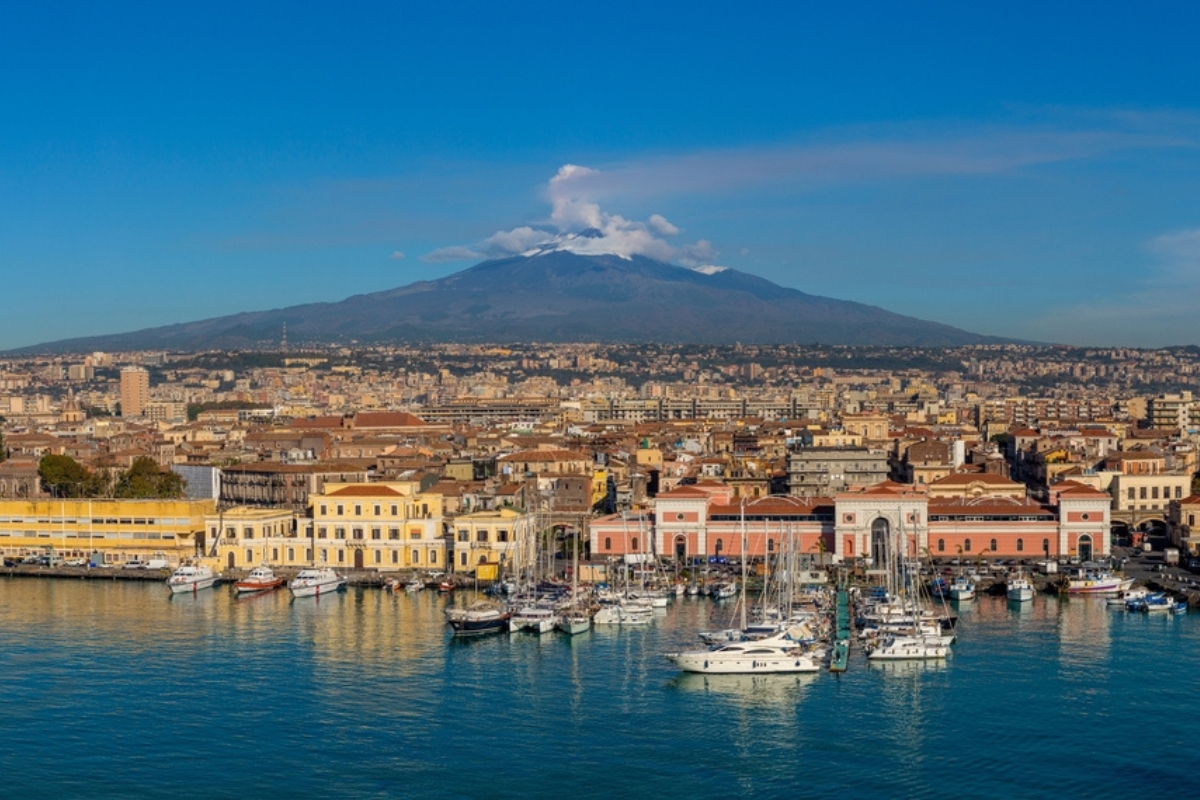 The port of Catania with Mount Etna in the background
The port of Catania with Mount Etna in the background
You can start your tour with the main square of Catania, Piazza del Duomo, which is home to the famous Elephant Fountain located in front of the Duomo of St. Agatha (also known as Duomo of Catania) and is thought to be a kind of totem that is supposed to save the city from any mishaps! The Duomo of Catania is of course worth a visit for its stunning baroque façade, but it also houses the tomb of the famous composer Vincenzo Bellini.
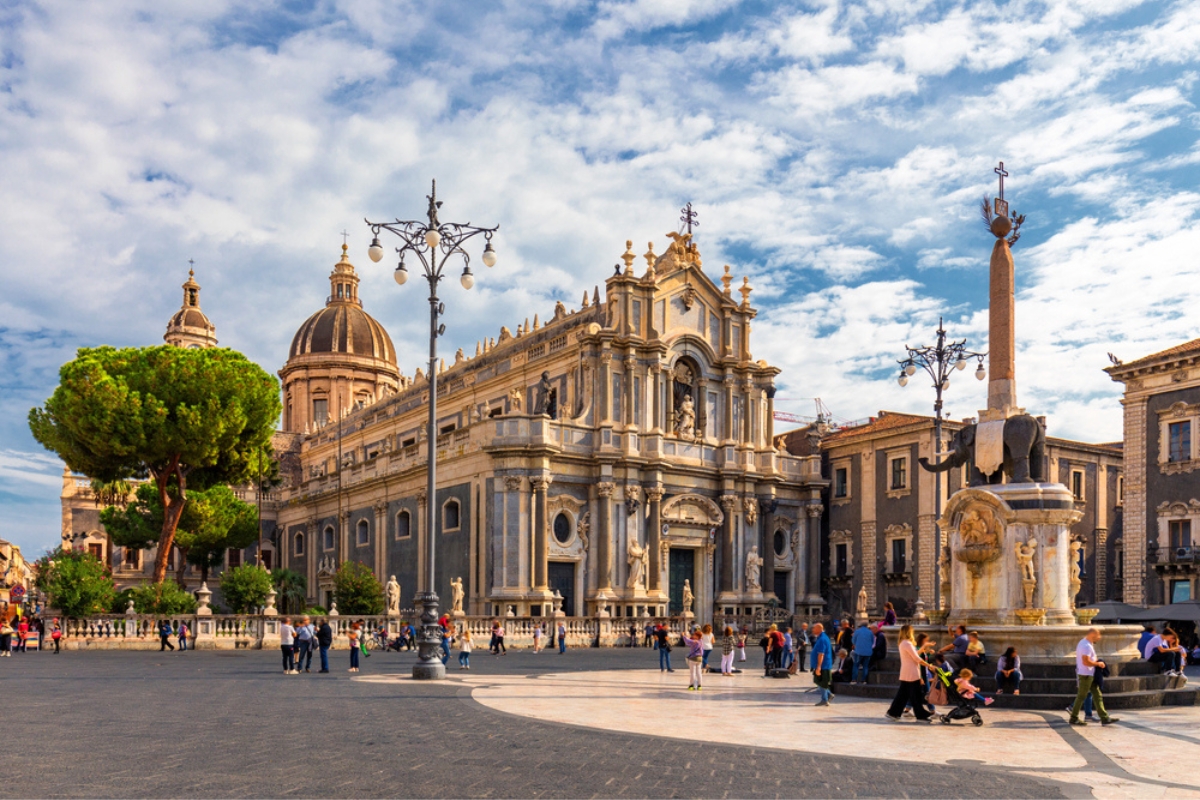 Piazza del Duomo in Catania with Duomo of Saint Agatha and the Elephant Fountain
Piazza del Duomo in Catania with Duomo of Saint Agatha and the Elephant Fountain
If you love walking, then Catania is the best place for exploration on foot as its 200-metre-long Via dei Crociferi is a condensed mixture of beautiful Baroque churches and convents, surely something unmissable. Another thing that you must not miss is Catania’s typical Pasta alla Norma, which you can enjoy after a day of walking around this beautiful city. If your foot seeks a bit of rest, then we suggest taking the typical red buses of Catania and just soaking in the city as the bus calmly winds through its streets and roads. The city also has amazing nightlife, next only to Palermo, so don’t think that it is only buildings and history that you should look forward to in Catania!
Looking for flexible bases in Catania? Book any of our self-catering accommodations!
Tip: For beach lovers, Taormina has one some of the most gorgeous beaches in all Sicily!
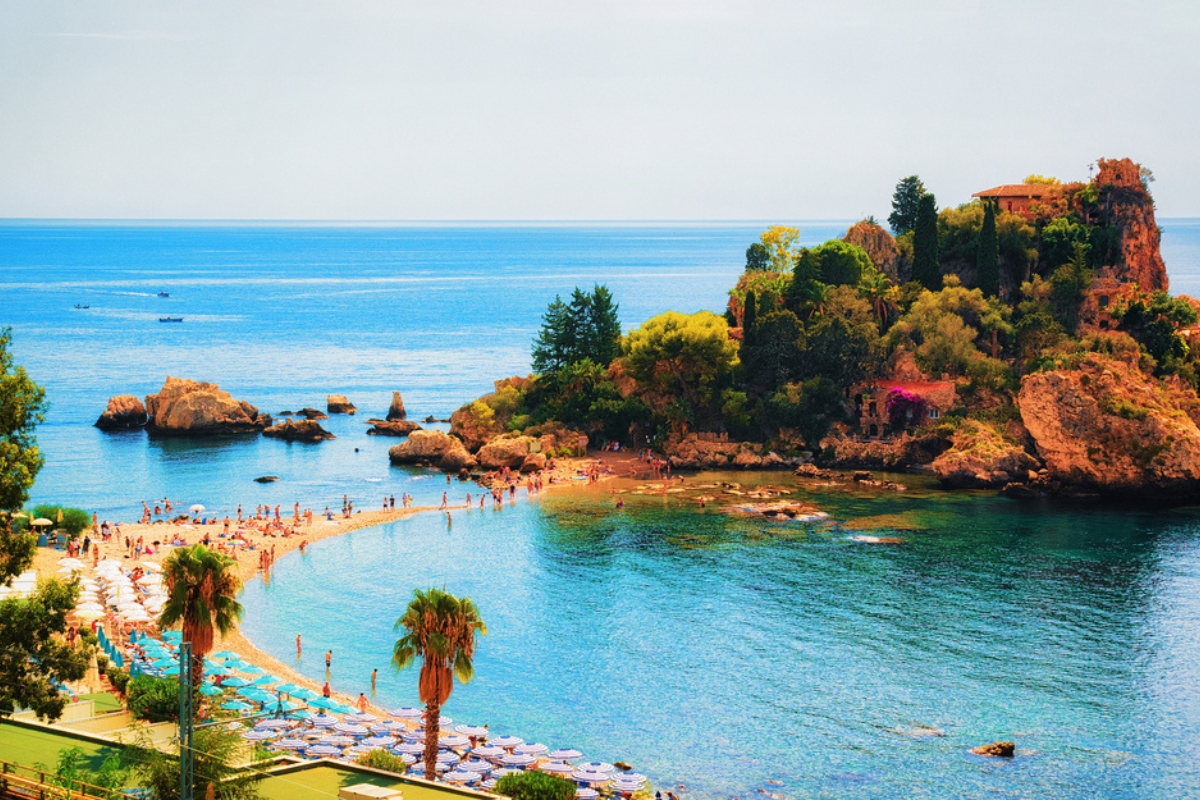
The gorgeous Isola Bella, connected to Taormina by a sandy beach
Located between Catania and Noto, Ortigia is a beautiful island in the city of Syracuse known for its white sandstone. This baroque island is the perfect mix of turquoise waters, the Mediterranean sun and 2500 years of history present in the form of notable monuments like the Roman Theatre, the Ear of Dionysius and Temple of Apollo.
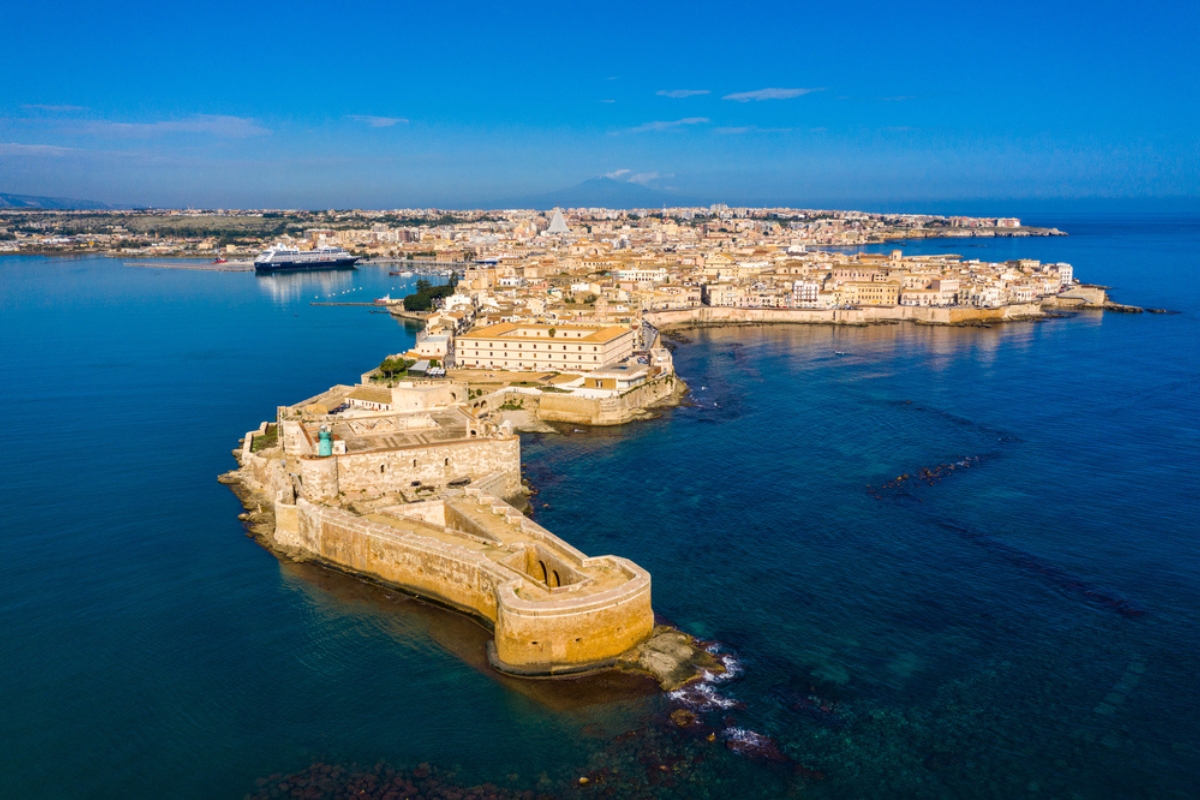 Aerial view of Syracuse coastline and Ortigia island
Aerial view of Syracuse coastline and Ortigia island
You can spend the first half of the day in Ortigia when the sun shines bright and head to Noto in the evening as the latter is just a 50-minute drive from the island. Or you can stay the night in the sweet city of Avola which is known for its wine Nero d’Avola and is the perfect stopover before heading to Noto!
Located in the capital of Sicilian Baroque, Noto’s cathedral is one of the finest examples of baroque Italian churches, with massive, picturesque flights of stairs. The town is also the perfect example of architectural beauty and urbanity in complete harmony. Once again, you can travel to almost every site worth visiting on foot.
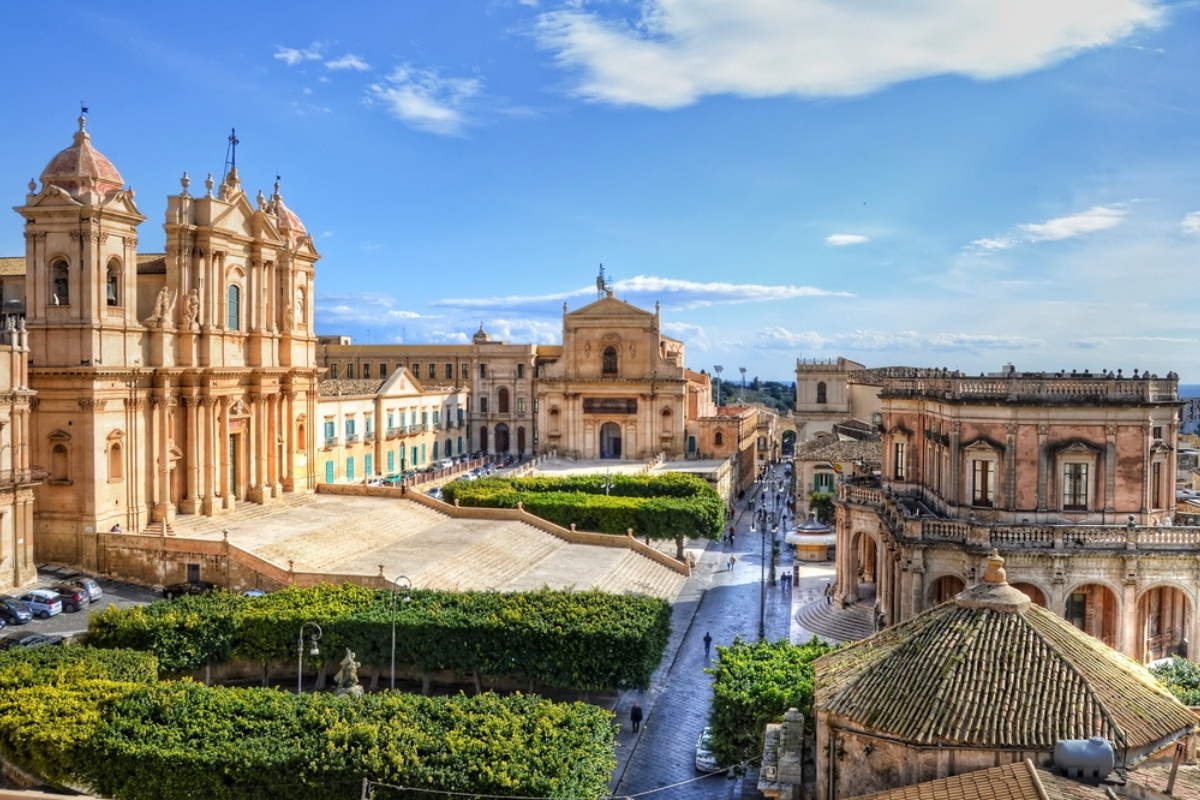 Panoramic view of baroque-style Noto cathedral
Panoramic view of baroque-style Noto cathedral
Start your walk from Porto Reale which will directly lead you into the historic centre of the town of Noto. From here you can make your way to Corso Vittorio Emmanuele II, Noto’s central street. Next, visit the Noto Cathedral, known as the Cathedral of San Nicolò and take in its rising façade made of sublime, honey-coloured sandstone. You can stay the night in Noto, or head to another Sicilian Baroque town, Modica, in just a 45-minute drive!
Tip: Don’t forget to try arancini (or arancine), a typical snack of Sicily available year-round. For those who don’t know yet, Arancini are rice balls that are usually stuffed with caciocavallo cheese, ragù and peas or melting mozzarella cheese and cooked ham.
Known for its exquisite hand-crafted chocolate, Modica is another famous baroque town in Val di Noto, which was destroyed in the major earthquake of 1693. However, after its reconstruction, this lesser-known city will manage to surprise anyone who is looking for Sicilian Baroque style accompanied by the pleasure of good food at the end of a tour day.
Worth visiting in Modica is the Church of San Giorgio, the ancient rock church of San Nicolò Inferiore, and Palazzo Polara, an elegant aristocratic residence. Again, travelling on foot is one of the best ways to lose yourself in this delicate, honey-coloured town. You can head to Corso Umberto I, the main street of Modica to take in its actual baroque soul!
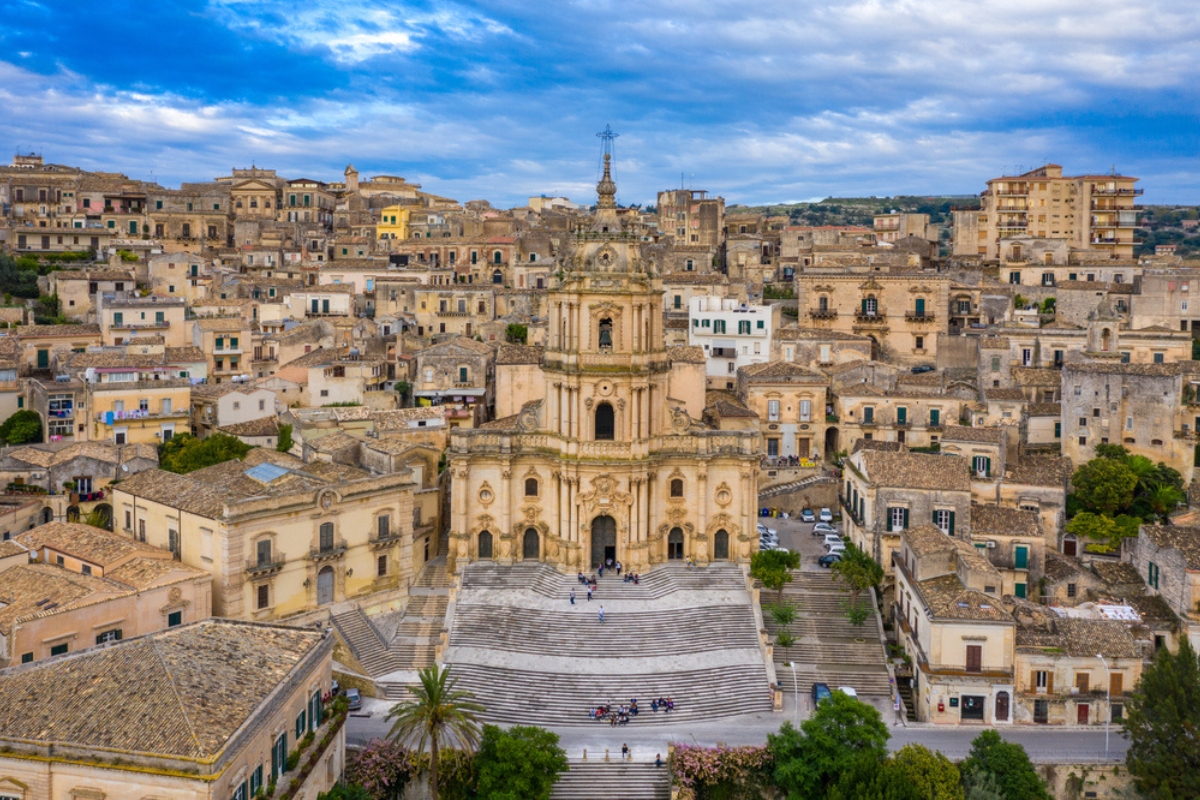 The impressive Duomo of San Giorgio in Modica, a fine example of Baroque art
The impressive Duomo of San Giorgio in Modica, a fine example of Baroque art
For chocolate lovers, a tour of the Chocolate Museum in Modica is a must. And if you wish to try something authentic, then go for Mpanatigghi, a cookie which is a mixture of chocolate, walnuts, almonds, lemon peel, cinnamon and beef!
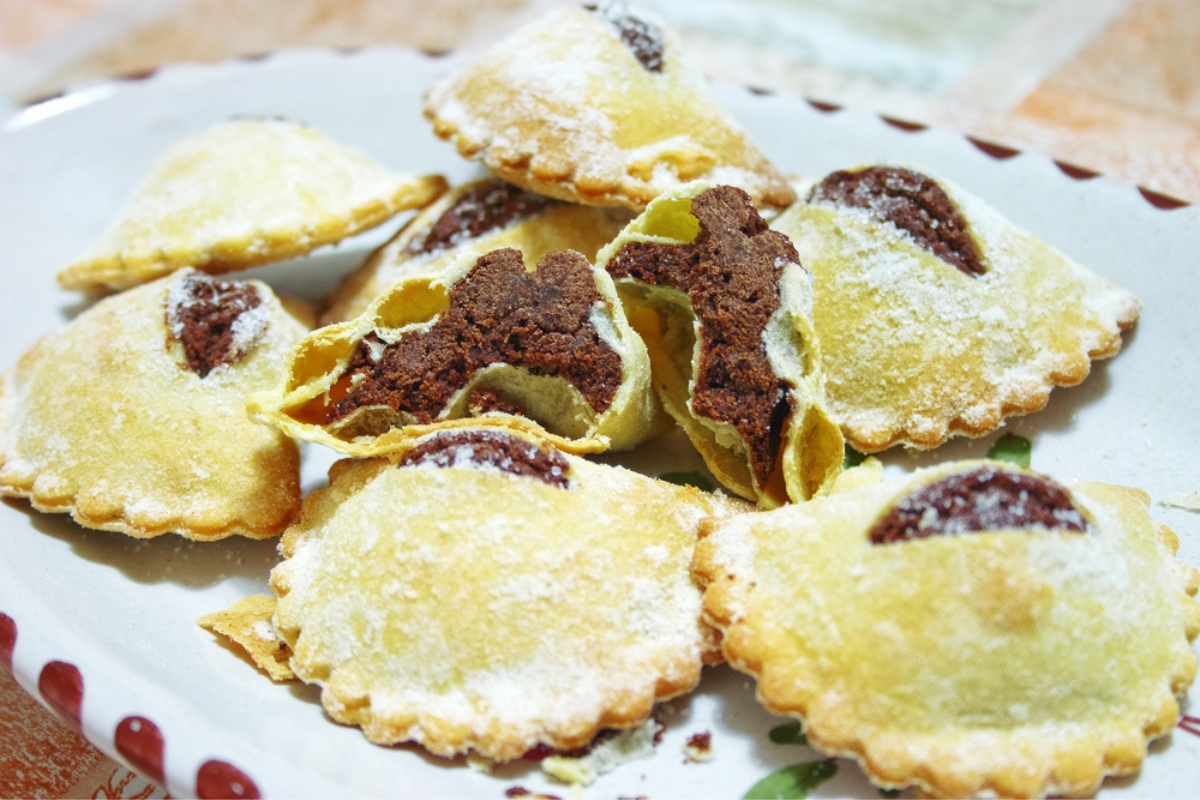 The must-try Mpanatigghi, made of chocolate, walnuts, almonds, lemon peel, cinnamon and beef
The must-try Mpanatigghi, made of chocolate, walnuts, almonds, lemon peel, cinnamon and beef
Want to stay in Modica a while longer and enjoy visiting another Baroque city just half an hour away? Have a look at these comfy holiday stays!
Located just half an hour’s drive from Modica, another hidden Sicilian Baroque architecture wonder is Ragusa where you can experience your very own romantic fairytale in Sicily. The town is divided into two parts, Ragusa Ibla (the old town) and Ragusa Superiore (the settlement) and feels a lot like a place lost in time.
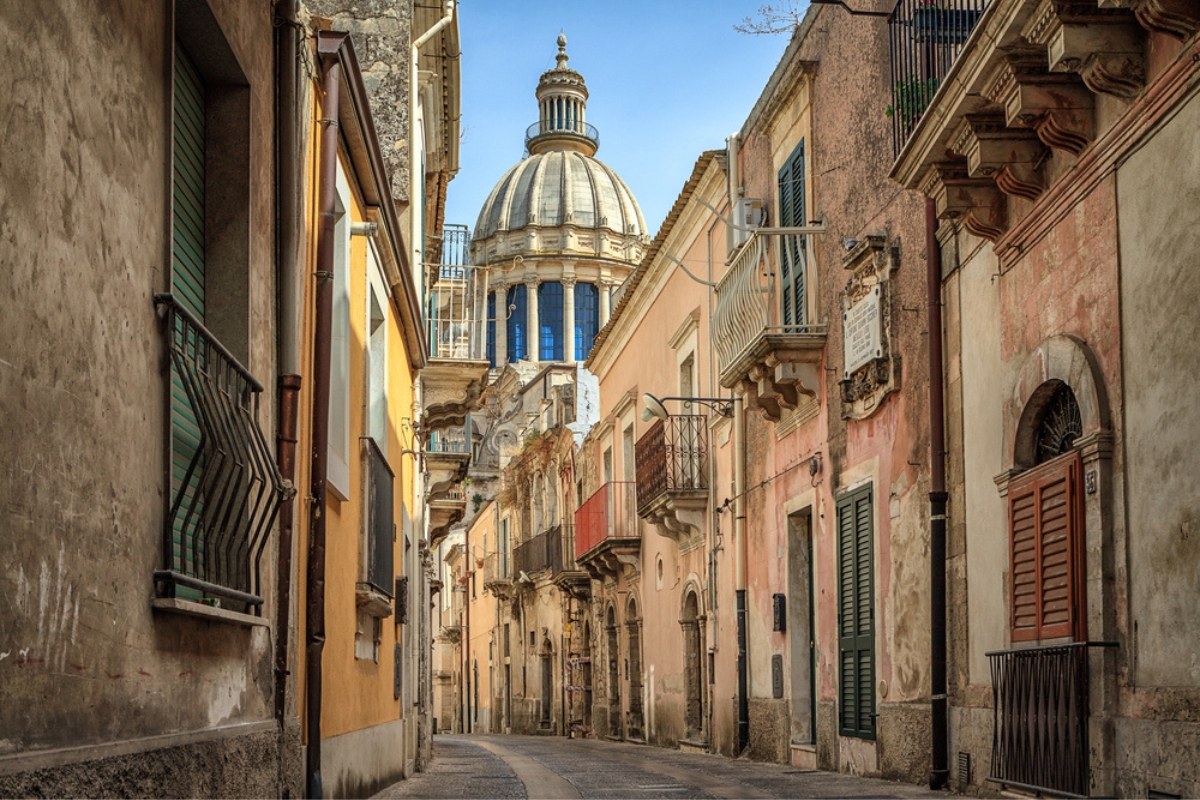 The atmospheric streets of Ragusa with ancient houses and baroque details
The atmospheric streets of Ragusa with ancient houses and baroque details
Make your way uphill to the Duomo di San Giorgio, a masterpiece by the foundational architect of Val di Noto, Rosario Gagliardi, after its demolition in the earthquake. It is best to spend half a day in Ragusa as the town is relatively small. However, it also has its share of exceptional dining experiences which you can find at the Michelin-starred Ciccio Sultano and Locanda Don Serafino, located close to the Duomo di San Giorgio in Ragusa Ibla and Chiesa di Santa Maria dei Miracoli respectively.
Let’s take a break from sightseeing and dive straight into the vibrant streets of Scicli. The main street, Via Francisco Mormino Penna, is an alluring boulevard lined with bars, cafes, historic buildings and churches, a perfect introduction to what Scicli has in store for you.
There are many Sicilian Baroque architecture buildings worth visiting in this small jewel. One of the first ones is the San Giovanni Evangelista Church with the Burgos Crucifix and the second is a more unusual destination, a pharmacy!
The Antica Farmacia Cartia in the Spadoro Palace houses in its interiors, baroque wooden furniture, beautiful chandeliers and a vibe that would remind you of Frankenstein's laboratory with its old-style bottles, beakers and other lab equipment! Another attraction to see is the San Bartolomeo Church, a late baroque building strongly influenced by the neoclassical style.
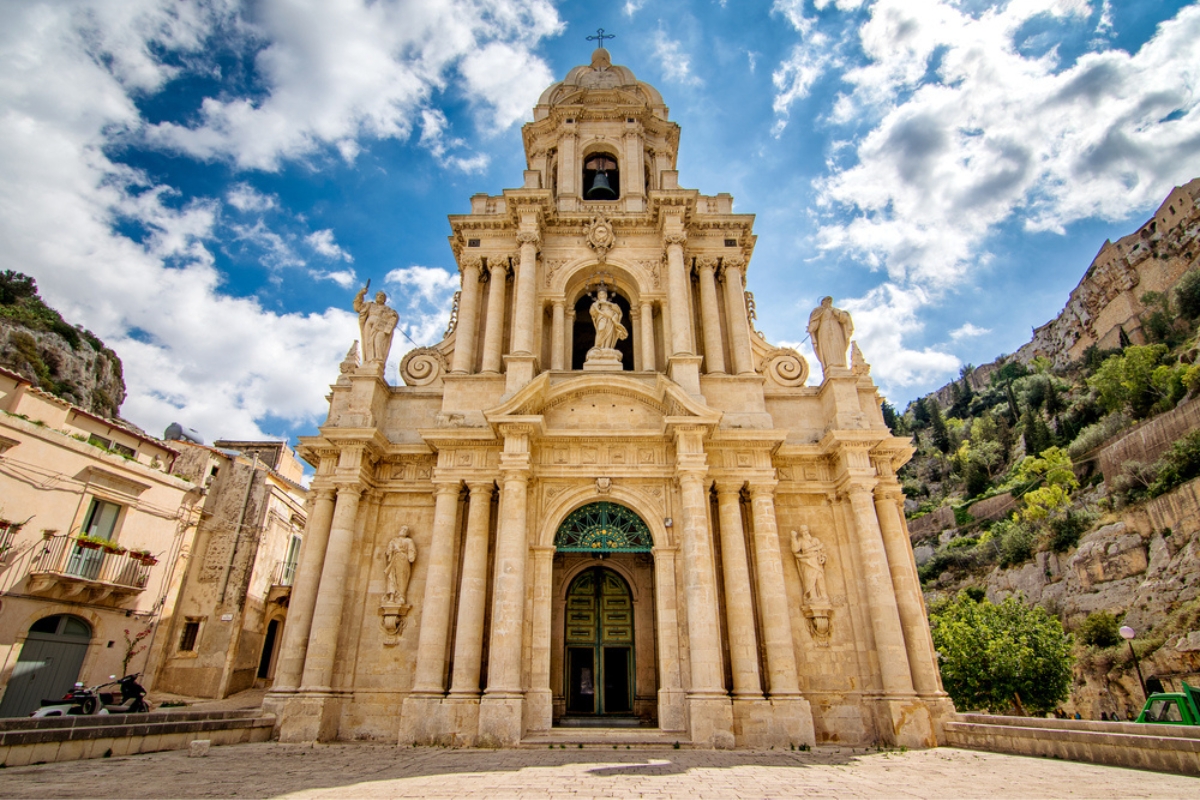 The late baroque San Bartolomeo Church with neoclassical influences
The late baroque San Bartolomeo Church with neoclassical influences
Another building that you should absolutely see is the Palazzo Beneventano, decorated with unusual baroque masks under its balconies! If you want to walk around for some great vistas over Scicli, then climb the hill to Chiesa di San Matteo from where you can catch a breathtaking glimpse of the entire town and other notable churches and cathedrals like Chiesa della Madonna del Carmine and Chiesa del Rosario!
Find the best places to relax with our diverse holiday homes in Scicli.
So, are you ready for the road trip of a lifetime in Sicily? Book your stay now!
join over 80,000 people who receive our updates